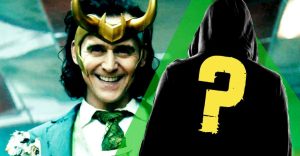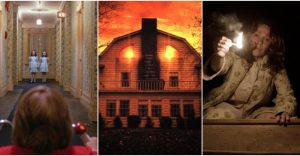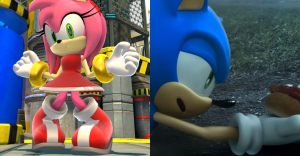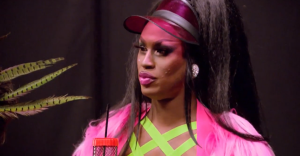Rocky & 9 Other Best Hollywood Movies Of The 1970s
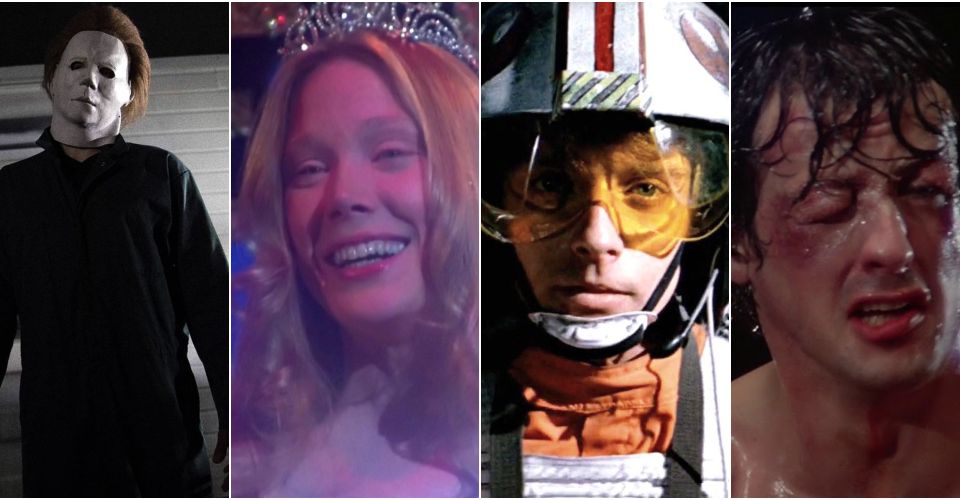
The 1970s brought with it significant changes to American society. Rising capitalism and social alienation gave rise to postmodern ideals and vice versa. The wars of the past, and the civil unrest and moral decay of the century had worn down American citizens. Older generations reserved a dislike for the younger counterculture of the ’60s.
As a consequence, Hollywood movies of the 1970s became heavily politicized. From the sudden rise of the allegorical horror genre to the decade’s obsession with masculinity that would bleed into the 1980s. Hollywood movies took a drastic turn in the ’70s.
10 The Exorcist (1973)

The Exorcist is a supernatural thriller movie based on the 1971 novel of the same name. It was directed by the prolific William Friedkin, who also helmed Sorcerer, Rampage, and Bug. The movie would later become a franchise of its own starting with the 1973 version. It was a tremendous success.
With a budget of 12 million dollars, the movie went on to make 441 million dollars at the box office. The 1970s saw a huge explosion of horror movies that earned great success. The Exorcist pioneered this horror explosion.
9 The Conversation (1974)

Notable director Francis Ford Coppola, who directed great 1970s classics like The Godfather, Apocalypse Now, and The Great Gatsby, also directed The Conversation. In a break from Hollywood conventions, the movie focused on the auditory. Unlike Hollywood’s love affair with the visual, taking the form of visual effects, cinematography, and more, The Conversation focused on auditory effects.
It was a very different movie from what Hollywood usually produces that forces audiences to pay attention to how sound is produced and heard. In the movie, Gene Hackman plays Harry Cole, a surveillance expert who realizes that his recordings are the key to a potential murder. He must decide whether what he hears is real or just his perception.
8 Carrie (1976)

One of Hollywood’s most popular move horror movies, Carrie is a 1976 American supernatural horror film adapted from Stephen King’s novel by the same name. Released in 1976, the movie came out two years after King’s novel. Today, Carrie’s pig’s blood scene has become one of the most wildly recognized scenes of the genre.
Like many horror movies of the sixties and seventies, Carrie explores America’s obsession with religion – especially religious repression. It exposes how American Christian repression can lead to the dark side of the nation’s psyche. Carrie, living with a repressed, religious mother, soon goes mad from being bullied by both her and her schoolmates. Tired of repressing, she uses her telekinetic powers for evil.
7 One Flew Over The Cuckoo’s Nest (1975)

During the 1970s Hollywood was still heavily dependent on literary works for movies. One Flew Over the Cuckoo’s Nest, for example, was also based on a novel by the same name by Ken Kesey. Starring Jack Nicholson, whose career was highly acclaimed during the ’70s and ’80s, the realist movie was a depressing look at mental health in America during the second half of the twentieth century.
One Flew Over the Cuckoo’s Nest is considered one of the greatest American novels ever. The same is said about the movie. Doris Fletcher is still, today, most recognized for her role as the evil nurse ratchet.
6 Rocky (1976)

While the 1960s brought a lot of famous movies that are still relevant today, the Hollywood studio trend of the movie franchise did not begin until the 1970s. One such movie franchise is the ever-popular Rocky. The first Rocky was released in 1976 and was written by and starred Sylvester Stallone. Rocky was one of the first movies to focus on the story of Italian Americans in the US.
Movies such as A Streetcar Named Desire had focused on other European-American working-class immigrants during the second half of the 20th century, but Rocky was one of the most popular movies of that century to do so. Like The Exorcist, Rocky had a very small budget. With just over 1 million dollars, it, however, made nearly $225 million at the box office.
5 Halloween (1978)

Another movie franchise that was born in the ’70s was the Halloween movie franchise. Like Carrie and The Exorcist, Halloween would become one of America’s most popular horror movie franchises spanning many decades to come. This was Jamie Lee Curtis’ first movie.
So far, the Halloween movie franchise has over eleven movies. Presently, Michael Myers, the murderer, is now well-known as a horror movie villain. Indeed, his costume is now a Halloween staple in October. As well as Alfred Hitchcock’s Psycho, Halloween was one of the first-ever slasher movies. Like any classic horror movie, Halloween is a reflection of its time, unveiling the struggle between a repressed 1950s America and a more sexually open one – a struggle ever-present in the suburbs, where sexuality is discarded for conformity, safety, and repression.
4 Jaws (1975)

Directed by Steven Spielberg, Jaws was the first-ever Hollywood summer blockbuster. With just a budget of $9 million, it earned a profit of $472 million. Based on a 1974 novel of the same name by Peter Benchley, Jaws is a thriller famous for using anticipation to hook its audience. The movie illustrated how much Hollywood studios could make if they focused their energy on producing yearly summer blockbusters.
Although the premise of the movie seems simple by today’s standards., with blockbusters today like Avengers: Endgame using complicated plots and visual effects to hook audiences, Jaws developed the blockbuster model of using exciting action sequences, comprehensive ad campaigns, and nationwide showcase to ensure a movie makes plenty of money.
3 Star Wars Episode IV – A New Hope (1977)

Two years after Jaws, Star Wars was released. The epic sci-fi movie, directed by George Lucas, starred Mark Hamill, Harrison Ford, Carrie Fisher, Alex Guinness, and James Earl Jones. It was the first of a trilogy and the first-ever movie in the Star Wars franchise. The movie popularized the sci-fi genre, including its conventions of creating different species, space travel, and operatic/theatric themes of family drama, alienation, and greed.
These themes remain a big part of the sci-fi genre today, for example in the British cult classic, Doctor Who. Star Wars remains the second highest-grossing film in North America and the fourth highest-grossing film in the world. It was immensely popular, winning seven Oscars that year. Like Jaws, it also began movie studios’ obsession with the summer blockbuster that would make them enormous profit. Indeed, Star Wars was made with a budget of 11 million dollars and went on to make more than $775 million profit.
2 Apocalypse Now (1979)

Another Francis Coppola movie, this time released in 1979, Apocalypse Now is a classic of Hollywood cinema that was based on the 1899 novella, Heart of Darkness, by Joseph Conrad. Heart of that Darkness, a very influential English classic, follows the protagonist on a boat through the Congo. In Apocalypse Now, the setting is changed from the Congo to Cambodia and South Vietnam.
The movie is another ode to masculinity, similar to Taxi Driver and Rocky. The ’70s, moving on into the ’80s, would see an increased interest in movies portraying hyper-masculinity. Apocalypse Now, for example, stars many famous male actors including Marlon Brando, Martin Sheen, Laurence Fishburne, Dennis Hopper, and Harrison Ford.
1 Taxi Driver (1976)

A Martin Scorsese classic, Taxi Driver deals with the psychological issues that the Vietnam War produced in America. The 1976 psychological thriller stars Robert De Niro, Jodie Foster, Harvey Keitel, and Albert Brooks. Although not a horror movie, Taxi Driver mirrors the preoccupation horror movies had with the decaying morality psychology, spirituality, and emotionality of American life. The movie portrays a child prostitute as an allegory for what America had become by the ’70s.
Taxi Driver is a good movie to watch to understand America in present times, in particular the nation’s obsession with guns and masculinity, the lack of mental health care, the negative consequence of the war on young men, and the dangers of the nation’s rampant politicization among mentally unwell citizens.










